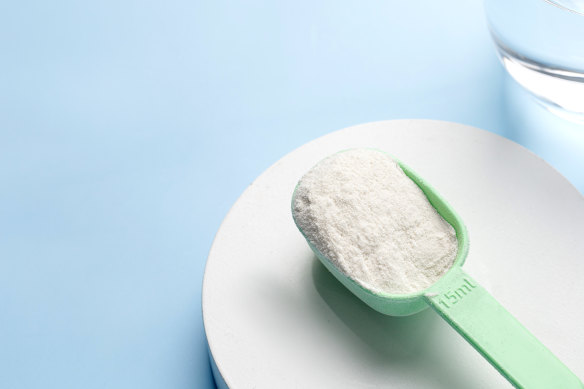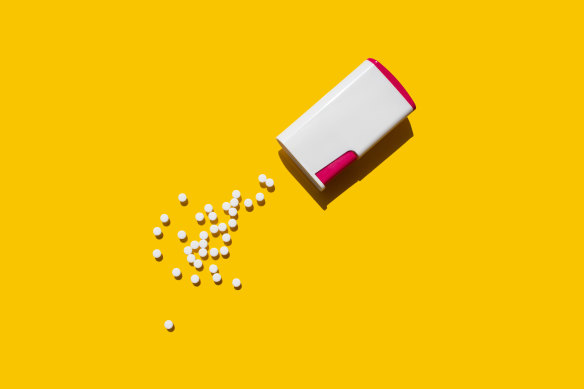A dietitian’s guide to food additives – and which ones to avoid
Ingredients such as emulsifiers, thickeners, stabilisers, colours and flavours are an essential part of modern-day food manufacturing. But are there some we should steer clear of?
Food additives are a controversial topic at the best of times. They are often considered unnatural, unnecessary and even dangerous, but the reality is that without food additives, many supermarket food products would not exist.
One of the issues is that the term “food additives” includes a wide range of different molecules ranging from simple emulsifiers, which help blend foods together, to artificial colours and flavours.
As such, there are significant differences in terms of which are “safe” and also necessary, versus those which have a potentially negative effect on our health. So, if you have a general perception that food additives are bad, here are the specifics on the most common food additives, the ones that are pretty harmless, and the ones that are best avoided.

What are food additives and why do we need them?
Food idealism may preach that we should only consume fresh, unprocessed foods, and for some this may be possible. For the rest of us, unless you want to ditch all processed foods completely, the reality is that we need certain additives in foods to prolong the shelf life, stop ingredients from separating, prevent mould from growing and to ensure that food maintains its colour and consistency.
Emulsifiers, thickeners, stabilisers, and natural colours and flavours are typically used in very small quantities within a food and have a negligible effect on our health, but are generally necessary to create packaged foods that are shelf stable for longer than a few days and retain quality that is fit for human consumption.
The ones to avoid
There are a handful of food additives for which adverse reactions are noted, or for which there is growing evidence that there are a number of negatives associated with consumption.

Flavour enhancers (621, 635, 627)
Monosodium glutamate or MSG (621) is one of the most commonly known flavour enhancers, but there are a number that are typically used to flavour chicken, meat, cheese and soy-flavoured foods. A form of naturally occurring glutamates, flavour enhancers give the rich, moreish flavour in many packet snack foods including potato chips, rice snacks, two-minute noodles and corn chips. Not only are these rich-tasting processed snacks associated with overeating, they can also cause a range of reactions including skin irritation, disrupted sleep and skin rashes in those who are sensitive. While some people have no reaction to flavour enhancers, it is the association between these rich-tasting foods and overconsumption that is also cause for concern from a health perspective long term.
Artificial food colouring (102, 110, 122-133, 151, 155)
While some of the brightest of bright colours have been banned in Australia for some time, there are a few such as brilliant blue (133) and sunset yellow (110) that still slip in, especially via foods such as lollies and ice-cream that have been made overseas. Commonly associated with irritability, skin issues and behavioural changes in children, again it is prudent to seek out natural colourings in food where possible. The majority of food companies now actively market the use of natural colourings, which explains the duller colours now found in confectionery and cake icing.

Artificial sweeteners (900s)
Used to sweeten foods for more than 100 years, artificial sweeteners are chemicals that are significantly sweeter than sugar itself, but which offer very few calories. Artificial sweeteners are most commonly used in diet products including soft drinks, can be identified by the 900s additives on food labels and include acesulphame K (950), sucralose or Splenda (955) and aspartame (951). For a number of years there has been debate about the safety of artificial sweeteners, but despite this they still are deemed safe for consumption by regulatory bodies. Given this ongoing consumer concern, and since there are now a large number of natural, plant-based alternatives to artificial sweeteners, a simple swap to natural alternatives is likely a better option for our health to help reduce our desire for intensely sweet foods long term.
Preservatives (210-213, 249-252, 220-228)
Preservatives are used to extend shelf life and are typically found in a wide range of foods including soft drink, dried fruit, processed meats and wine. There have been specific concerns about several groups of these preservatives for different reasons.
Of greatest health concern is the group of nitrates, or additives numbered 249-252, which are added to processed meats such as ham, salami and pepperoni. When added to meat, and cooked in processing, nitrates convert to nitrosamines which is associated with damage to the digestive tract and an increased risk of developing some types of cancer including stomach and bowel cancer. It is for this reason the World Health Organisation suggests reducing the intake of processed meats in the diet, in general.
There is also an association between the sulphite group of preservatives, which includes additives 220-228, and their relationship to respiratory function, especially in asthmatics. They are most commonly used to preserve fruit, juices and wine.

Carrageenan (407)
This is an additive derived from red seaweed and most commonly found in nut-based milks, dairy and meat products, where it is used as a thickening agent. In animal studies there is some evidence to suggest that carrageenan can cause inflammation in the digestive tract and is even associated with the development of colon cancer. For this reason, it is one additive that is best avoided, especially for those with any digestive issues, or family history of digestive cancers.
The best recipes from Australia's leading chefs straight to your inbox.
Sign up